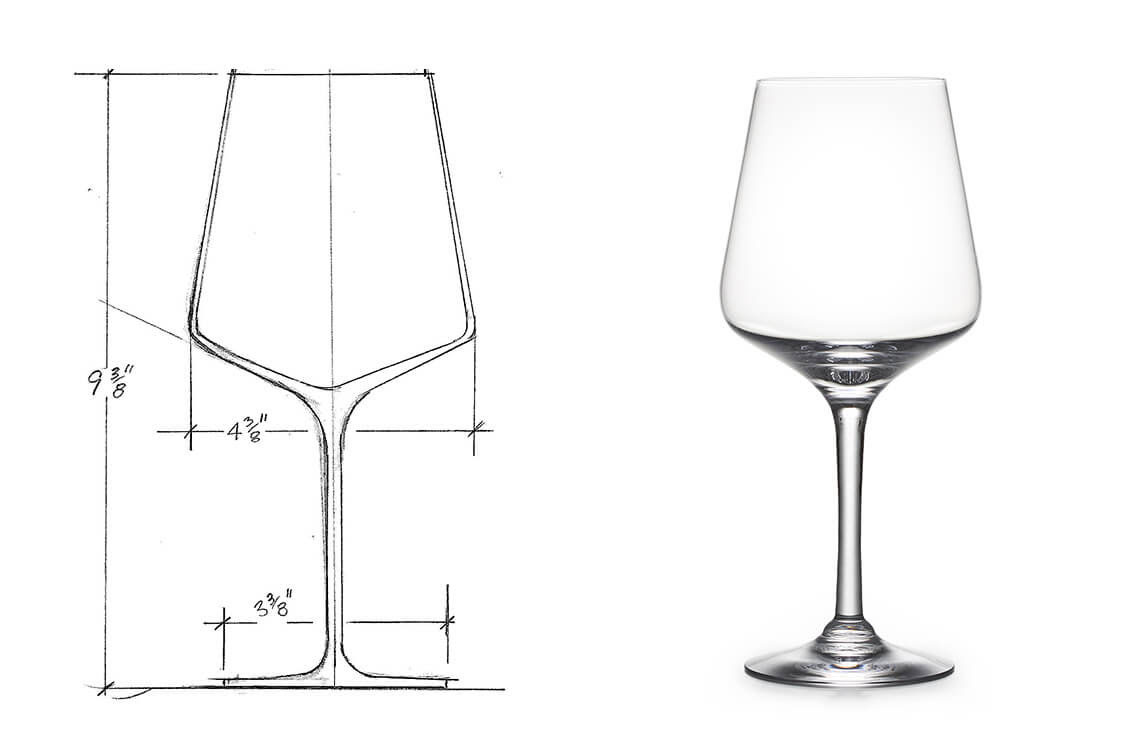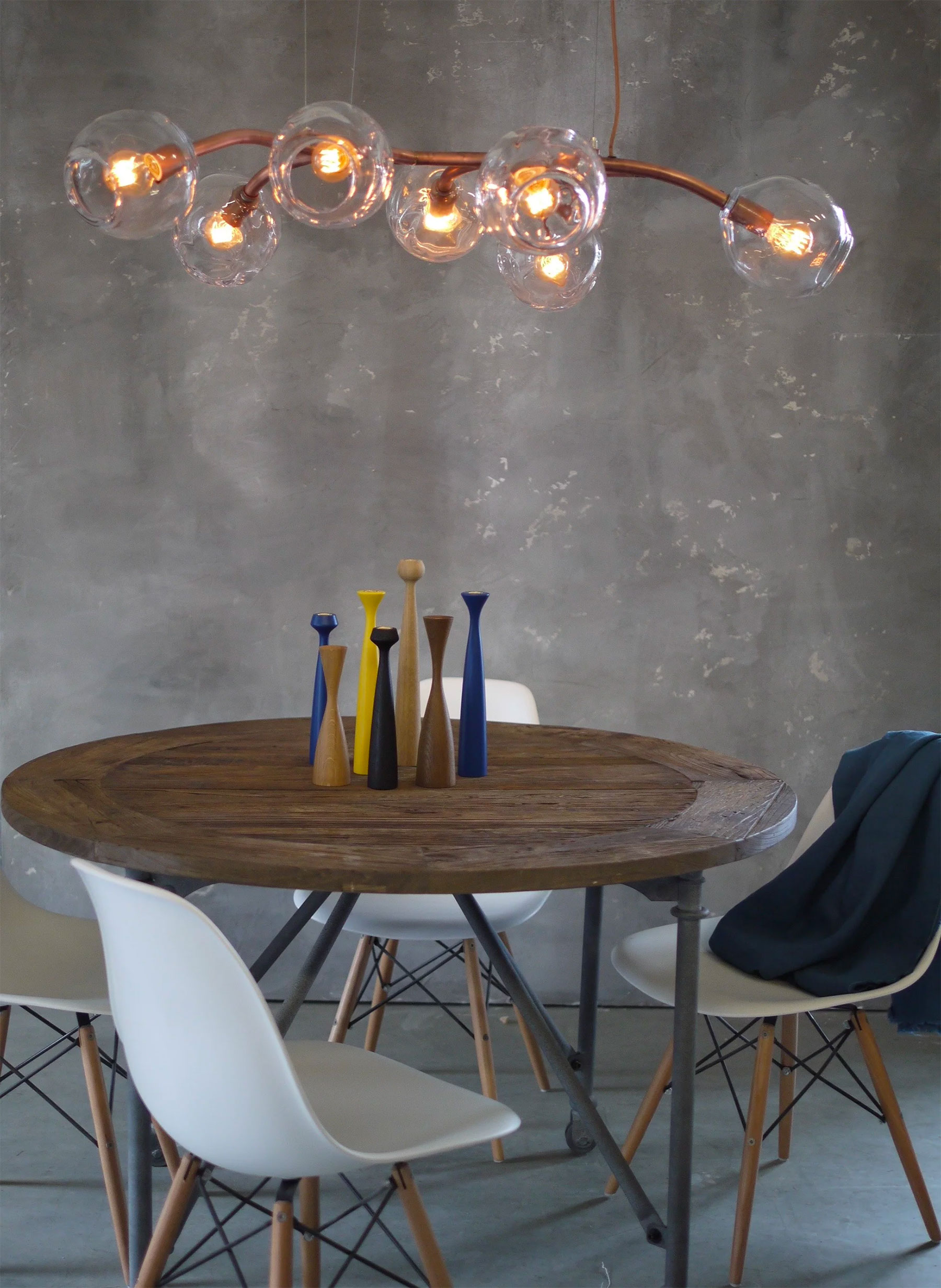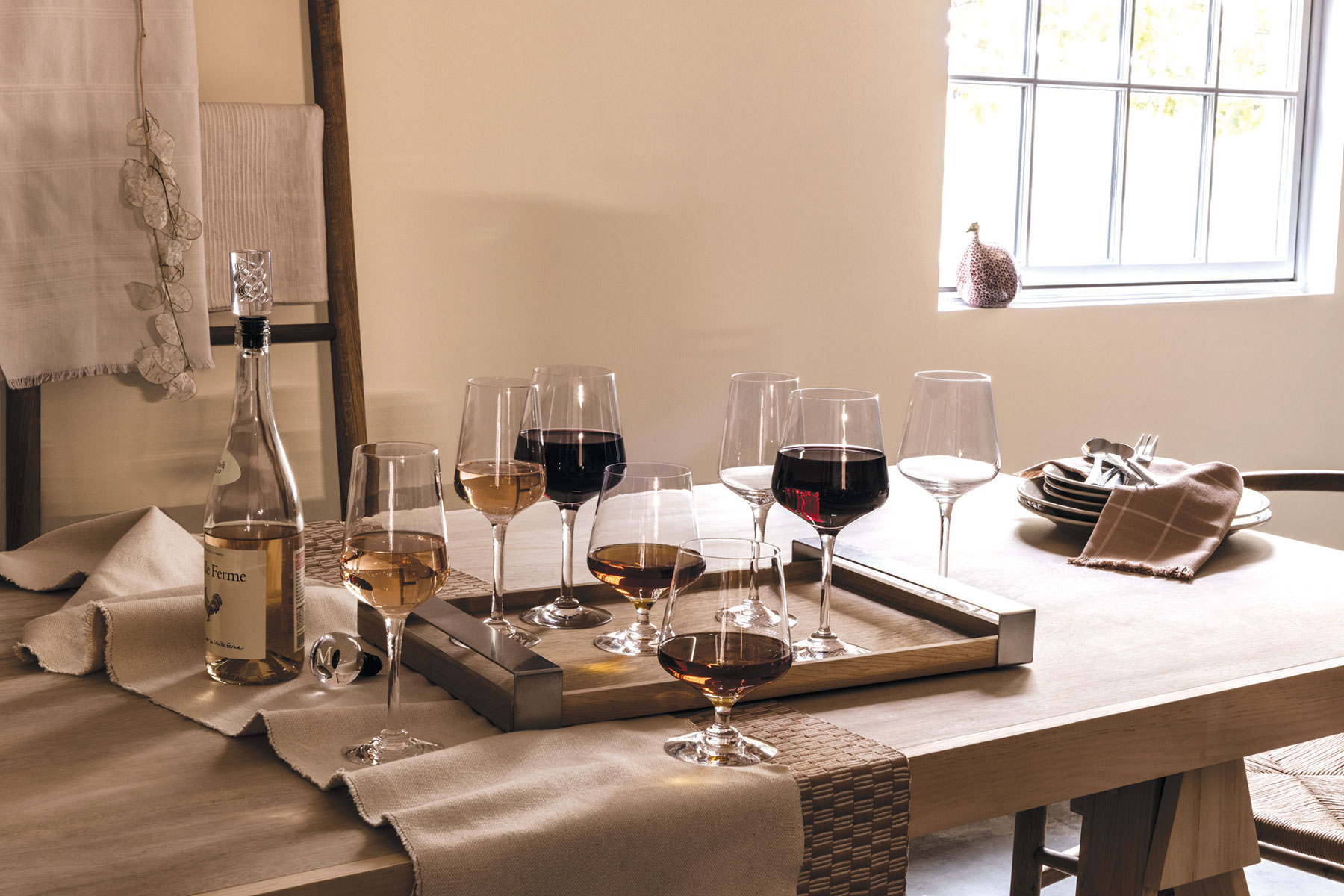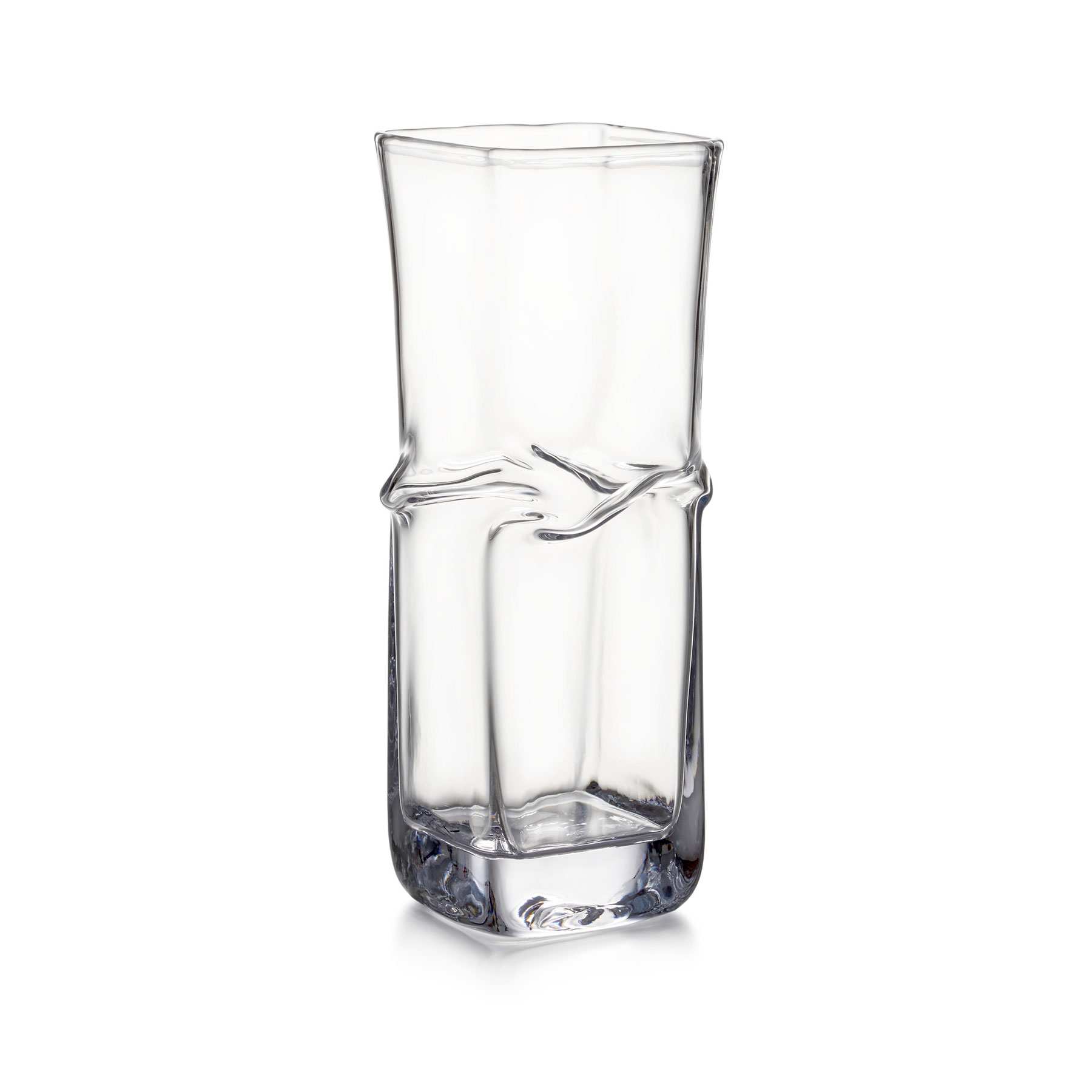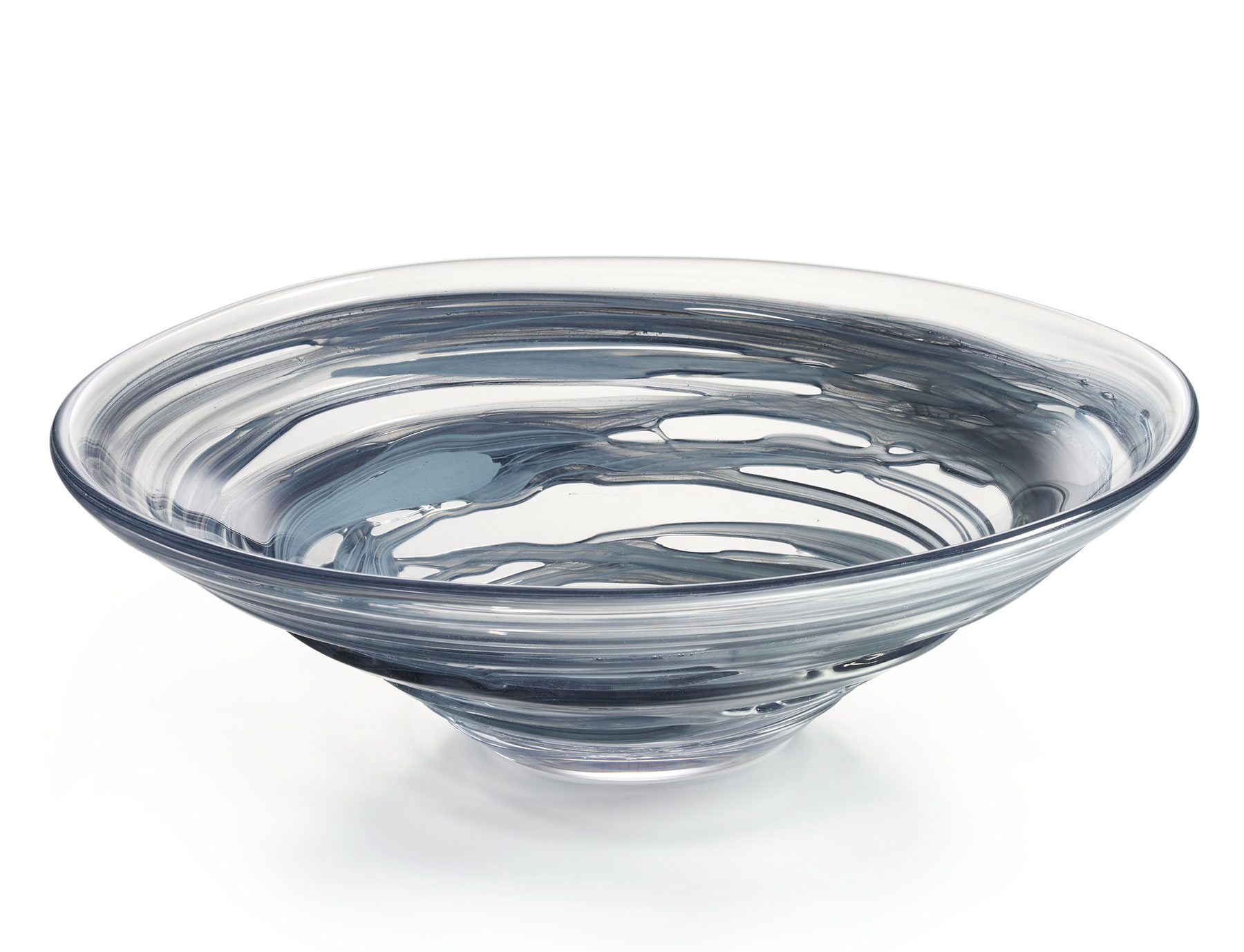Here, we ask designers to take a selfie and give us an inside look at their life.
Age: 50
Occupation: Design
Instagram: @addwater2day
Hometown: Hanover, NH
Studio location: Windsor, VT
Describe what you make: I design tabletop, lighting, and decor products in glass and ceramic for the handmade production of Simon Pearce in Vermont. To complement our core business, I also explore other mediums such as wood, stone, metal, and textiles, and work on the interior design and fixturing of our retail stores. I also enjoy making my own furniture that relates to my aesthetic at home.
The most important thing you’ve designed to date: I’m most excited about Alpine, my soapstone and glass barware collection. The soapstone elements can be frozen, and once chilled, can keep drinks cold. It’s been well-received and demonstrates how uniting different materials can be a great source for new design concepts. Also, the Vine chandelier is a new direction for Simon Pearce—we can combine glass in near-limitless combinations with metal for lighting.
Describe the problem your work solves: It’s a traceability story: We make products that reconnect user with maker. Users can experience how glass and ceramics are made by hand. The items are built to last with the highest-quality materials combined with the skill of masters in their craft.
Describe the project you are working on now: A group of streamlined glass-handled barware tools and a series of new sculptural forms in marble combined with glass.
A new or forthcoming project we should know about: Two new series launching next spring: the glass-handled bar tool group and a beer flight tasting set with a soapstone chilling base.
What you absolutely must have in your studio: I prefer hand rendering, so absolutely must have a selection of pencils, pens, and markers with different kinds of paper that suit the current product design. Music is on, and the espresso maker runs a few times a day with the occasional infusion of chocolate. Through the winter, hot chocolate with cacao and maple syrup is a favorite. I have my paintings on the walls, with a variety of tear sheets and parts of R&D experiments in various stages. I advance an idea once it starts to really come together into a compelling concept.
What you do when you’re not working: I spend a great deal of time working on painting and sculpture that relate to my design work. Both the functional and nonfunctional feed into each other and are complementary. I still work with the premise I learned while studying Industrial Design at Pratt, which is to develop things with character. One’s artistic side dovetails with function to create something entirely new.
Sources of creative envy: I’m inspired by the early modernists, such as Alvar Aalto, Frank Lloyd Wright, Antoni Gaudí, Rudolf Steiner, and the first phase of the Bauhaus with artists like Johannes Itten, Wassily Kandinsky, and Paul Klee.
The distraction you want to eliminate: I moved from New York nine years ago to simplify my life. I succeeded for the first two years, but continually need to eliminate distractions to stay focused on creativity. Specific distractions can be furnishings and materials that build up around you, so I purge periodically. In New Hampshire and Vermont, you can find so much beauty and inspiration in the natural environment. You want to be tuned into it and not distracted by the man-made.
Concrete or marble? Concrete is fairly popular now—particularly in a Brutalist style—but I’ve been recently working in the opposite direction with fluid forms in marble and alabaster.
High-rise or townhouse? Townhouse, although I live in a mid-century modern home by an architect that studied with Gropius, and prefer an open plan with lots of space.
Remember or forget? I keep a stack of Moleskine sketchbooks that capture ideas as they come up. They become a warehouse of potential and help me not forget.
Aliens or ghosts? Ghosts.
Dark or light? I typically like to work light materials into dark, and often use chalk pencils on black paper for product rendering.

